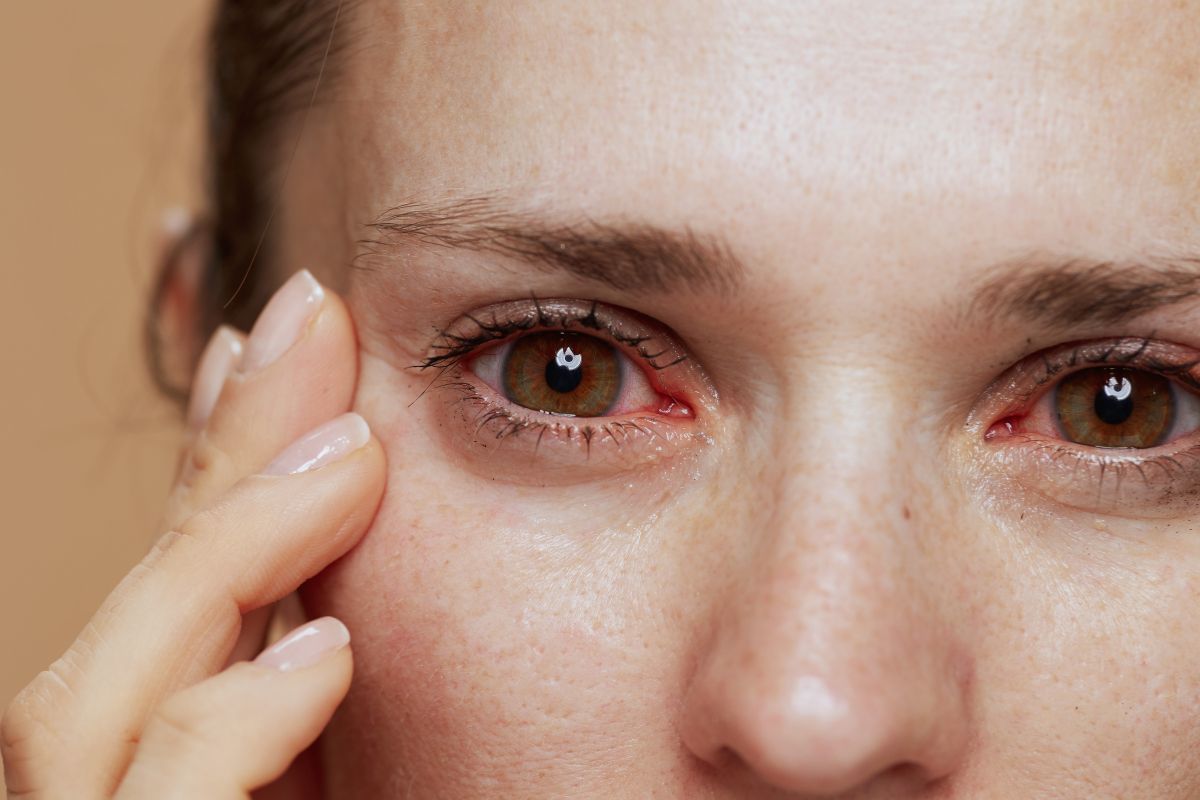Experiencing Eye Discomfort from Long Screen Time? Here’s How to Prevent Dry Eye Syndrome
In today's digital age, the relentless glow of screens permeates our lives. From work emails to social media scrolling, endless entertainment options, online shopping sprees, and the ever-present notifications vying for our attention, our eyes endure hours of intense focus, often leading to the discomfort and irritation of dry eye syndrome. This prevalent condition, characterized by insufficient tear production or poor tear quality, is a significant concern for millions, impacting vision, comfort, and overall well-being. This comprehensive guide delves deep into the connection between prolonged screen time and dry eye, offering practical strategies, lifestyle adjustments, and product recommendations to help you protect your precious sight. We'll explore the causes, symptoms, and effective solutions to alleviate dry eye and maintain optimal ocular health in our increasingly digital world.
Understanding the Dry Eye Dilemma: A Deep Dive into Ocular Health
Dry eye syndrome, often referred to as DES, is a multifaceted condition affecting the delicate balance of the ocular surface. Our eyes are intricately designed self-lubricating systems, constantly bathed in a tear film that maintains clarity, comfort, and protects the cornea from damage. This tear film, far from being a simple liquid, is a complex three-layered structure: an oily outer layer that prevents evaporation, a watery middle layer that provides lubrication, and a mucous inner layer that helps the tear film adhere to the eye's surface. When this delicate equilibrium is disrupted—due to insufficient tear production (hypo-secretion), excessive tear evaporation (hyper-evaporation), or a combination of both—the result is dry eye. This disruption can manifest in a variety of ways, ranging from mild discomfort to significant visual impairment, affecting not only vision but also daily life and quality of life.
The Multifaceted Symptoms of Dry Eye: Recognizing the Warning Signs
The symptoms of dry eye syndrome can be subtle at first, often progressing gradually. Early indicators may include a sensation of grittiness, dryness, or a foreign body feeling in the eyes—as if something is constantly irritating the surface. These mild symptoms often go unnoticed initially, which is why early recognition is vital. As the condition worsens, more pronounced symptoms can emerge, including burning, stinging, itching, and redness. These symptoms can significantly impact comfort, making even simple tasks like reading or using a computer extremely challenging. Blurred vision, eye fatigue, and increased light sensitivity (photophobia) are also common complaints, further highlighting the impact dry eye has on daily function. In severe cases, dry eye can lead to corneal damage, impacting visual acuity, causing inflammation, and potentially leading to significant visual impairment. Therefore, early recognition and preventative measures are not merely recommended; they're crucial for long-term eye health.
The Screen Time-Dry Eye Connection: A Modern Epidemic
The widespread use of digital devices has dramatically increased our screen time, creating a modern epidemic of dry eye. The constant interaction with screens – computers, smartphones, tablets, and televisions – significantly contributes to DES in several key ways:
- Reduced Blinking Rate: When engrossed in digital activities, our natural blinking rate decreases dramatically. Blinking is a crucial reflex, essential for replenishing the tear film and spreading it evenly across the ocular surface. Infrequent blinking allows the tear film to evaporate more rapidly, leading to dryness and irritation, setting the stage for dry eye development.
- Blue Light Exposure: The blue light emitted from digital screens is increasingly implicated in digital eye strain and accelerated tear evaporation. This high-energy visible light can contribute to oxidative stress, potentially damaging the ocular surface and impairing tear film stability.
- Poor Posture and Ergonomic Issues: Prolonged screen use often involves poor posture, resulting in strained neck, shoulder, and back muscles. This poor posture can affect blood flow to the eyes, decreasing tear production and contributing to discomfort. Furthermore, inadequate lighting and improper screen distance can exacerbate eye strain.
- Air Conditioning and Environmental Factors: Many people use digital devices in air-conditioned environments. These dry environments, often coupled with low humidity, further reduce tear film stability, exacerbating dry eye symptoms. Similarly, environmental factors like wind and dust can contribute to increased tear evaporation.
Practical Strategies to Prevent and Manage Dry Eye from Screen Time
While eliminating screen time entirely isn't realistic in today's digital world, taking proactive steps to mitigate its impact on your eye health is essential. By incorporating these strategies into your daily routine, you can significantly reduce the risk of developing or exacerbating dry eye:
- The 20-20-20 Rule: This simple yet incredibly effective technique advocates looking away from your screen every 20 minutes, focusing on an object 20 feet away for 20 seconds. This allows your eyes to relax and refocus, promoting natural tear film regeneration and reducing strain.
- Adjust Your Screen Settings: Optimize your screen's brightness and contrast to reduce eye strain. Avoid excessively bright screens, particularly in low-light environments. Adjust the contrast to a comfortable level to minimize glare and eye fatigue.
- Maintain Proper Distance and Posture: Position your screen at an arm's length to avoid excessive focusing and strain. Use ergonomic tools such as monitor risers and comfortable chairs to maintain good posture. Consider an external keyboard to avoid hunching over your laptop.
- Blink More Frequently: Consciously make an effort to blink more often, especially while focusing on screens. This simple action can significantly improve tear film distribution and reduce evaporation.
- Hydration is Paramount: Drinking plenty of water throughout the day is essential for overall well-being, including maintaining adequate tear production. Dehydration directly impacts tear film quality.
- Humidify Your Surroundings: A humidifier can help add moisture to the air, particularly in dry climates or during winter months, reducing tear evaporation and relieving dry eye symptoms. This is especially beneficial in offices and homes with central heating.
- Utilize Eye Patches for Soothing Relief: Explore the benefits of soothing eye patches designed to replenish moisture and reduce inflammation. Our Wise Quest Soothing Eye Patches - 1-Month Care Pack provides a convenient and effective way to support natural eye hydration. This convenient, month-long supply of herbal patches, made in Japan, is designed to alleviate redness, dryness, and strain, offering noticeable improvements in daily comfort. They are a safe and non-toxic option for soothing tired, dry eyes, providing a comforting experience after a long day of screen time.

Wise Quest Soothing Eye Patches - 1-Month Care Pack
Enjoy a full month of natural eye support with our herbal patches. Designed to ease redness, dryness, and strain, this supply offers noticeable improvements in daily comfort, all while being safe and non-toxic. Made in Japan.
When to Seek Professional Help: Recognizing the Need for Expert Care
While the preventative measures and lifestyle adjustments outlined above are highly effective for many, persistent or severe dry eye symptoms warrant a visit to an ophthalmologist or optometrist. These eye care professionals can perform a thorough eye exam to diagnose the underlying cause of your dry eye and recommend appropriate treatment options. This may include prescription eye drops, such as artificial tears or lubricating agents, punctal plugs (small devices inserted into the tear ducts to reduce tear drainage), or other therapies aimed at restoring the delicate balance of the ocular surface. Don't hesitate to seek professional help if your symptoms are persistent, severe, or impacting your daily life.
Long-Term Eye Health: A Holistic Approach
Protecting your vision is a long-term commitment, requiring a multifaceted approach that extends beyond simply managing screen time. While reducing screen time and incorporating preventative measures is crucial, maintaining a healthy lifestyle plays a significant role in overall ocular well-being. A balanced diet rich in antioxidants and omega-3 fatty acids, regular exercise, and adequate sleep all contribute to eye health. Furthermore, protecting your eyes from UV radiation by wearing sunglasses when outdoors and scheduling regular comprehensive eye exams are equally important steps to take proactive control of your eye health.
Conclusion: Prioritizing Your Ocular Well-being in the Digital Age
In today's increasingly digital world, the risk of developing dry eye syndrome is undeniable. However, by understanding the causes, symptoms, and effective management strategies, you can significantly reduce your risk and maintain healthy, comfortable vision. By incorporating the preventative measures discussed—including the 20-20-20 rule, proper screen ergonomics, adequate hydration, and the use of soothing eye patches like the Wise Quest Soothing Eye Patches - 1-Month Care Pack—you can take control of your eye health. Remember that prioritizing your eye health is an investment in your overall well-being, allowing you to fully enjoy the digital world without compromising your vision.









